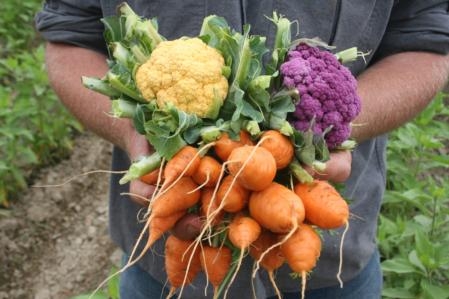Cool Season Vegetables
By Tami Reece UCCE Master Gardener
Fall is the perfect time to refresh your garden and keep it growing into the winter. You want to choose the right crops and the best location; choose cold weather protection best suited to your needs and know your frost dates.
Cool season crops thrive in cooler temperatures and several have shorter seasons than warm season crops. Cool season vegetables grow best between 45 and 55°F and 55 to 75°F and most mature cool season vegetables are frost tolerant. Winter crops can be planted from seed if there is sufficient time for the plant to become established before the first frost. Otherwise, it's best to consider using transplants. It's important to know the local frost dates and plan and plant accordingly. The approximate frost dates for San Luis Obispo County are:
Interior area First Frost: October 7 Last Frost: April 20
North County First Frost: November 7 Last Frost: April 17
Coast/SLO First Frost: December 31 Last Frost: February 15
Pick a location that will get full sun, but will be shielded from the wind or frost such as near a south facing wall or fence. If the best location for your winter garden is the same location as your spring and summer garden, it's important to regenerate the soil that provided your spring and summer crops. Work in several inches of compost throughout the planting area to replenish and rebuild the soil.
Choose the right form of weather protection based on your needs and available resources. Cloches make for a simple cold weather protectant. A cloche is something you put over an individual plant to protect it from frost or freeze. They can be plastic milk jugs, glass or plastic cloches, or even cardboard boxes. Row covers are permeable fabrics placed over plants or frames. Heavier fabrics can protect to 24 degrees. Cold frames are bottomless frames placed on the ground, with a hinged top that act like a mini greenhouse. Lastly, a good straw mulch of 6 to 10 inches loosely scattered can provide additional protect from frost.
With a little preparation, you can have fresh vegetables throughout the fall and winter seasons.
Are you interested in becoming a UCCE Master Gardener? Join us at our Informational Meeting, Monday, October 20 at 1:00 p.m. in our auditorium at 2156 Sierra Way, San Luis Obispo. For more information please visit: http://ucanr.edu/sites/mgslo/Master_Gardener_Training_Program/
